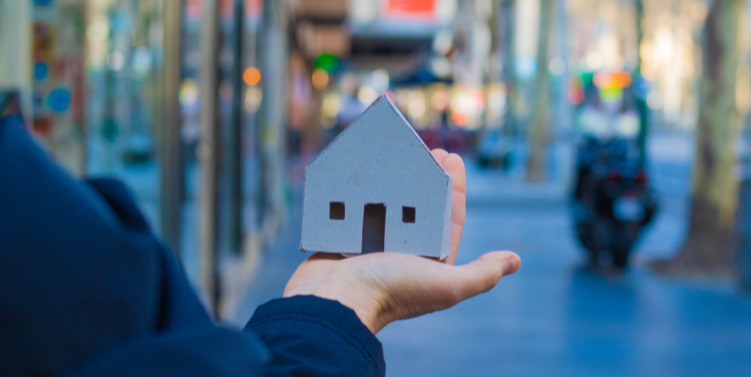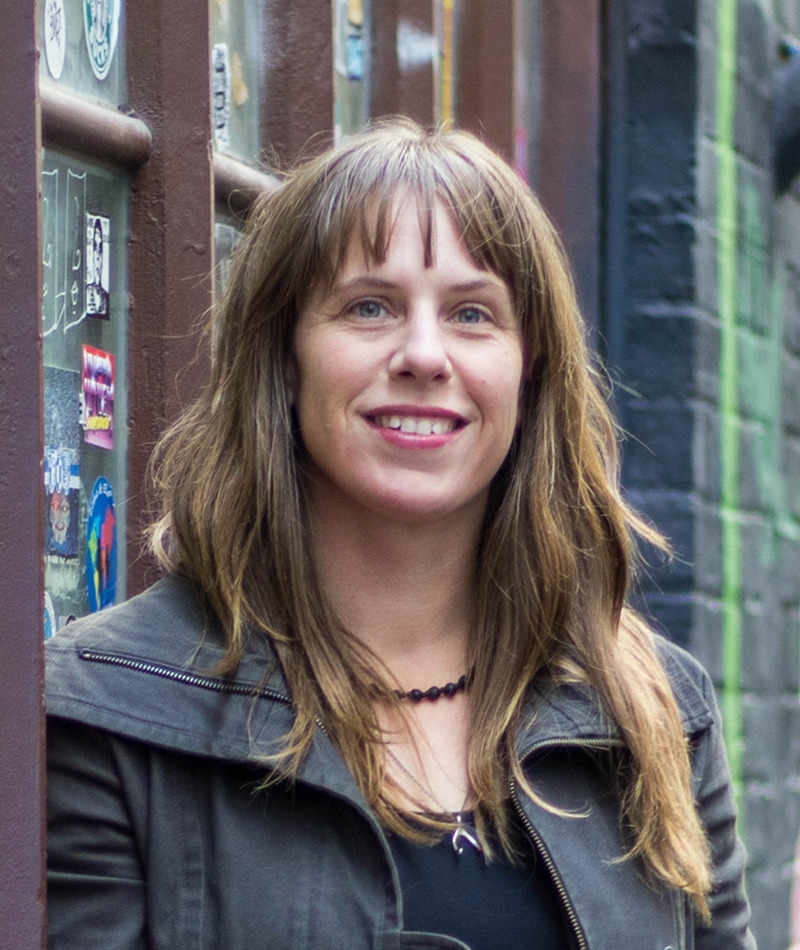
Housing affordability in Australia has become dire, particularly in Australia’s two largest cities. Sydney and Melbourne now rank 3rd and 4th respectively in the list of most unaffordable cities of the world. The lack of affordable housing is fuelling homelessness. At our last census, 116, 427 Australians were recorded as homeless, an increase of 13.7 per cent in five years. These numbers should not be ignored.
There are many contributing factors that can lead to a person experiencing homelessness, but the lack of affordable housing remains paramount. Below is a, not exhaustive, list of ways that philanthropy has recently housed Australians.
1. Scale
Opened in July 2019, VincentCare’s Ozanam House in North Melbourne is now Australia’s largest homelessness accommodation centre. The centre, a redevelopment of an existing site, has 134 short, medium and long-term rooms and apartments housing men and women. The ground floor boasts an integrated health and social supports services, which can help 250 people a day.
While the Victorian Government contributed to the redevelopment, philanthropy kick-started the investment with major contributions from Lord Mayor’s Charitable Foundation and Gandel Philanthropy. Additional funders included St Vincent de Paul Society, Perpetual and EnergyAustralia.
2. Safety
Family violence is the main reason why people, mainly women and children, seek assistance for homelessness. A woman’s ability to maintain housing when escaping family violence is linked to her access to financial and social resources, which can often be an aspect of abuse from a controlling partner. Women escaping family violence may not have a housing history, or may have to leave immediately, limiting her ability to rent.
Launch Housing is developing innovative accommodation and support to assist women and their children who have been affected by family violence, family breakdown, mental illness and substance issues and who remain at risk of becoming homeless. The development will provide 60 self-contained apartments with a 24-hour concierge services. The women and children will also be helped through the co-location of support services within the development, including child-care and after school homework club. Philanthropy, including Lord Mayor’s Charitable Foundation, Gandel Philanthropy, Shine On Foundation, ANMF and other philanthropic donors, has been critical in supporting this project from its inception and have helped leverage Victorian Government funding of $13 million.
3. Young people
Young people have high rates of homelessness; 19 to 24-year-olds have the highest rate of homelessness at nearly 1 in 100, compared to 1 in 200 of the general population. This is even more significant when considering that people who experience homelessness in their youth are more likely to experience entrenched homelessness as an adult.
Literally on the frontline of homelessness support in the CBD is Melbourne City Mission’s Frontyard. Frontyard is the central intake in the city for youth who are experiencing homelessness and now has an 18 bed accommodation with 24-hour wrap around service to help the most high acuity youths. Completed in May this year, the redevelopment of Frontyard is geared towards young people with services including animal therapy and a separated chill-out room which provides specialised sensory equipment to help youth to self-regulate their emotions.
Philanthropic funding was provided by Lord Mayor’s Charitable Foundation, Peter and Lyndy White Foundation, Gandel Philanthropy, Joe White Bequest, PwC, Andrew and Geraldine Buxton Foundation and with significant inkind contributions from the Property Industry Foundation.
4. Underutilised land
The cost of land, particularly in major cities, is driving housing unaffordability. People are moving farther away from the city, with less access to public transport or employment opportunities. Removing the cost of land is one way to lower housing costs.
The Affordable Housing Challenge is an initiative of the Lord Mayor’s Charitable Foundation that encourages local councils to contribute well-located sites to affordable housing supply using council owned underutilised land. The City of Darebin has partnered with the Foundation, providing a council owned car park close to amenities.
5. Transportable homes
Another way to encourage the use of underutilised land is through transportable homes. Harris Transportable Housing Project is using nine parcels of vacant VicRoads land in Footscray and Maidstone to create 57 tiny homes for people with a chronic experience of homelessness. The project is a partnership between Launch Housing and philanthropists Geoff and Brad Harris, of Harris Capital, with funding from the Victorian Property Fund.
Of course Kids Under Cover has been using relocatable units for close to 30 years, supporting vulnerable young people who are either experiencing homelessness or at risk of homelessness through their Studio Program, building in the backyards of a family or carer’s home. More recent innovations include a trial of studios for emergency accommodation and Village 21, a pilot in partnership with Anglicare Victoria with funds from the Victorian Government, using studios on underutilised land, including a remodelled car park, for young people leaving out-of-home care. Kids Under Cover partners with philanthropic supporters from small individual donors through to major partners including the Shine On Foundation, Gandel Philanthropy, Reinehr Family Foundation, RE Ross Trust, the HDT Williamson Trust and the Brian and Virginia McNamee Foundation.
6. Underutilised buildings
Over a million houses across Australia were recorded as unoccupied on census night. That is 11.2 per cent of all housing. There are many reasons why homes may be unoccupied, including when waiting for planning provisions to be finalised for redevelopments. These homes can be utilised for short periods to provide temporary accommodation to those in need.
The Pathways Home Transitional Housing Project (Pathways Home) is a partnership between PAYCE Foundation, Women’s Community Shelters (WCS) and Bridge Housing. Under the program, developers and property owners provide vacant homes which are used for much-needed crisis accommodation for women and children escaping domestic violence.
In inner city Melbourne, YWCA secured a short-term lease of a vacant aged-care facility, now known as Lakehouse, to convert to a ‘pop-up shelter’, providing nearly 40 women over 55 with temporary accommodation. Contributing partners included Metricon, Residential Group, Dezign Electrics, Reece, Ades Dingley Plumbing, Two Good, Tonner Transport, Kitchen Innovations, All Over Bins, Bunnings Port Melbourne, Prime Group, Silver Chef, Milton Group, Sigma, Caspacare, Housing All Australians, Lord Mayors Charitable Foundation, Rotary – South Melbourne and state and local government.
7. Education
Many would recognise education as a key to a good life, yet many students are doing it tough. Around one in seven, or 15 per cent, of Australian university students (local and international students) regularly go without food or necessities because of financial difficulties. The same survey found this percentage to be higher if you were from a low SEO background (18 per cent) or were Indigenous (25 per cent). If education is the key to future prosperity, then students need to be set up to succeed.
The Hansen Little Foundation recently provided the University of Melbourne with a $30 million gift to house and support students whose personal circumstances may have not provided them with the chance to study. The Hansen Scholarship Program will begin next year with 20 high-achieving students. The gift includes a new building, purpose built to house over 600 students who will call Little Hall home during their three years of undergraduate study.
In Western Sydney, Lendlease is also helping young people through a partnership with Platform Youth Services. The pilot program will house six young people in Lemongrove House, while they study. As well as housing, the program offers tutors and youth workers to ensure the young people receive support while they study. Leadlease funded the program through their new philanthropic initiative, Futuresteps – aimed at creating partnerships to end homelessness.
8. Ageing in place
The latest census data showed us that homelessness for older people is on the rise. This is likely to increase, as Australia’s overall population ages. Women over 55 years are the fastest growing group experiencing homelessness, with a range of structural and cultural factors increasing women’s economic disadvantage.
Age Discrimination Commission the Hon. Dr Kay Patterson noted, in a recent Background Paper, that there were few services available for older women who were working, renting and had modest savings – as this group was likely to become homeless once they received the aged care pension and their savings ran out.
One innovative model that is currently being tested is the Older Women’s Housing Project created by Women’s Property Initiatives. The project will build four unit townhouse, with prescribed guidelines for accessibility and flexible space to allow for caregivers if required in the future. Planning approval for the pilot has been approved in Beaconsfield, with hopes that this model could be applied to other sites.
Funding has been received by Women’s Property Initiatives from the Lord Mayor’s Charitable Foundation, Gandel Philanthropy, The Big Issue’s Homes for Homes, the Mercy Foundation, the Ian Potter Foundation and the Westpac Foundation.
9. Creating vacancies
The highly sought-after social housing, which includes both public and community housing, is now elusive for all but the most highly disadvantaged. Even then, some people can wait years for such housing. The social housing waitlist in NSW has over 60,000 people, while in Victoria the number is 82,000.
Charities have looked to create more vacancies in social housing by helping those within social housing move out into the mainstream private market. The Barnett Foundation helped 28 families move from social housing through their Melbourne Apartment Project, a development in North Melbourne where units were sold to families with a deferred second mortgage. The Barnett Foundation is expanding their trial, and their philanthropic activities to include investing in financial literacy skills for social housing tenants and the development of crisis accommodation for those experiencing homelessness.
10. Influencing policy
Most of these examples have been about increasing housing stock, yet there are numerous policy leavers that can affect homelessness.
Everybody’s Home has a five point plan to fix Australia’s broken housing system. The plan includes: new investment to increase social and affordable housing, a national plan to end homelessness, housing tax changes, tenancy law reform, and an increase in Commonwealth Rent Assistance. StreetSmart has contributed funding – with the campaign currently seeking further support.
For renters who derive their incomes from Centrelink benefits, only a fraction can afford private rentals. For instance, a recent Rental Report showed only 0.3 per cent of one-bedroom dwellings are available for singles on Newstart in Melbourne.
Raise the rates is a campaign asking the government to increase Newstart. Funders included The Myer Foundation, The Snow Foundation, Fay Fuller Foundation, The Broadley Trust, Reichstein Foundation, The Wyatt Trust, The RE Ross Trust, Lord Mayor’s Charitable Foundation, Vincent Fairfax Family Foundation, Mutual Trust.
As the name suggests, the Home Stretch campaign aims to extend government support for young people to the age of 21 in out-of-home care, a group that is significantly over-represented in homelessness statistics. The campaign is national, with some initial success in Victoria where the State Government has committed to a trial of 250 young Victorians over five years starting in 2020. Home Stretch philanthropic partners include B B & Miller Foundation, Beverley Jackson Foundation, Collier Charitable Fund, Community Services Trust, David Taylor Galt Charitable Trust managed by Equity Trustees, Edith Grace Kemp Charitable Trust managed by Equity Trustees, Gandel Philanthropy, Louis & Lesley Nelken Trust Fund managed by Equity Trustees, Sidney Myer Fund, The Alfred Edments managed by Equity Trustees, The William Buckland Foundation and Vera Moore Foundation.
